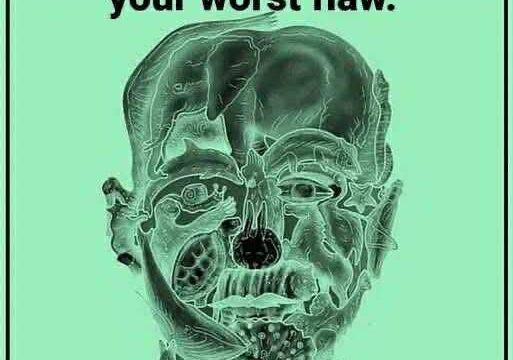Death is a universal experience, yet it remains one of our greatest fears, shrouded in mystery and uncertainty. Julie McFadden, a hospice nurse from Los Angeles, California, has dedicated over 15 years to end-of-life care, aiming to demystify the dying process and help families understand what to expect as their loved ones approach death.

In her efforts to educate the public, McFadden has highlighted several phenomena commonly observed in patients nearing the end of life. These insights not only prepare families but also alleviate some of the fear surrounding death
1. Changes in Breathing Patterns
One of the most noticeable changes as a person approaches death is a shift in their breathing patterns. This can be alarming for families who are unprepared for such changes. McFadden explains that it’s common to observe rapid breathing followed by long pauses, and then rapid breathing again. This pattern, known as Cheyne-Stokes respiration, occurs due to metabolic changes in the body as it shuts down. Each cycle typically lasts between 30 seconds and two minutes. While it may appear distressing, McFadden reassures families that this breathing pattern does not indicate suffering.
2. The “Death Rattle”
Another common phenomenon is the “death rattle,” a gurgling noise that can be unsettling to hear. As the body nears the end of life, the brain stops sending signals to swallow saliva, leading to a buildup in the mouth and throat. This accumulation causes a rattling sound as air moves through the respiratory tract. McFadden emphasizes that, although the sound can be disturbing to loved ones, it is a normal part of the dying process and does not cause discomfort to the patient.
3. Terminal Lucidity
Terminal lucidity refers to a sudden, unexpected return of mental clarity and memory shortly before death. Patients who have been unresponsive or confused may suddenly become alert, recognize loved ones, and engage in meaningful conversations. This phenomenon can be both a blessing and a source of confusion for families, as it often precedes death by a short period. McFadden notes that while terminal lucidity is not fully understood, it is a recognized occurrence in end-of-life care.
4. End-of-Life Visioning
Many patients nearing death report seeing deceased loved ones, religious figures, or even pets. This phenomenon, known as end-of-life visioning, is common and typically occurs about a month before death. Patients may have conversations with these visions, and while it might seem unsettling, McFadden assures that it is a normal part of the dying process. These visions are usually comforting to the patient and can provide a sense of peace as they transition.
5. The “Death Stare”
Another phenomenon observed is the “death stare,” where a patient becomes fixated on a particular spot in the room and appears unresponsive to external stimuli. Despite attempts to redirect their gaze, they remain focused on that specific area. McFadden explains that this is not a cause for alarm and is simply another aspect of the body’s natural process of shutting down.
6. Choosing the Time of Death
Some patients seem to have control over the timing of their death, often waiting for a particular moment, such as the arrival of a loved one or a significant date, before passing. Conversely, some may wait until they are alone to die, possibly to spare their loved ones the pain of witnessing their final moments. This phenomenon highlights the deep connection between the mind and body during the dying process.
The “death reach” refers to a patient reaching out their hands, as if grasping for something unseen. This movement is often gentle and purposeful, suggesting they are reaching for someone or something beyond the physical realm. Families observing this may find it unsettling, but McFadden assures that it is a common occurrence and part of the natural dying process.
Understanding the Dying Process
McFadden emphasizes that these phenomena are natural aspects of the body’s process of shutting down and are not indicative of pain or distress. By understanding these signs, families can be better prepared for the changes their loved ones may experience as they approach death. This knowledge can provide comfort and reduce anxiety during a profoundly emotional time.
The Importance of Hospice Care
Hospice care focuses on providing comfort and support to patients in the final stages of a terminal illness. McFadden advocates for early integration of hospice services, as it can significantly improve the quality of life for both patients and their families. Hospice teams offer medical, emotional, and spiritual support, ensuring that patients experience dignity and peace in their final days.
Conclusion
Death, while inevitable, remains a topic many find difficult to discuss. However, professionals like Julie McFadden play a crucial role in shedding light on the dying process, helping to demystify it and provide comfort to those facing the loss of a loved one. By understanding the natural phenomena that often occur at the end of life, we can approach death with greater compassion, preparedness, and peace.





